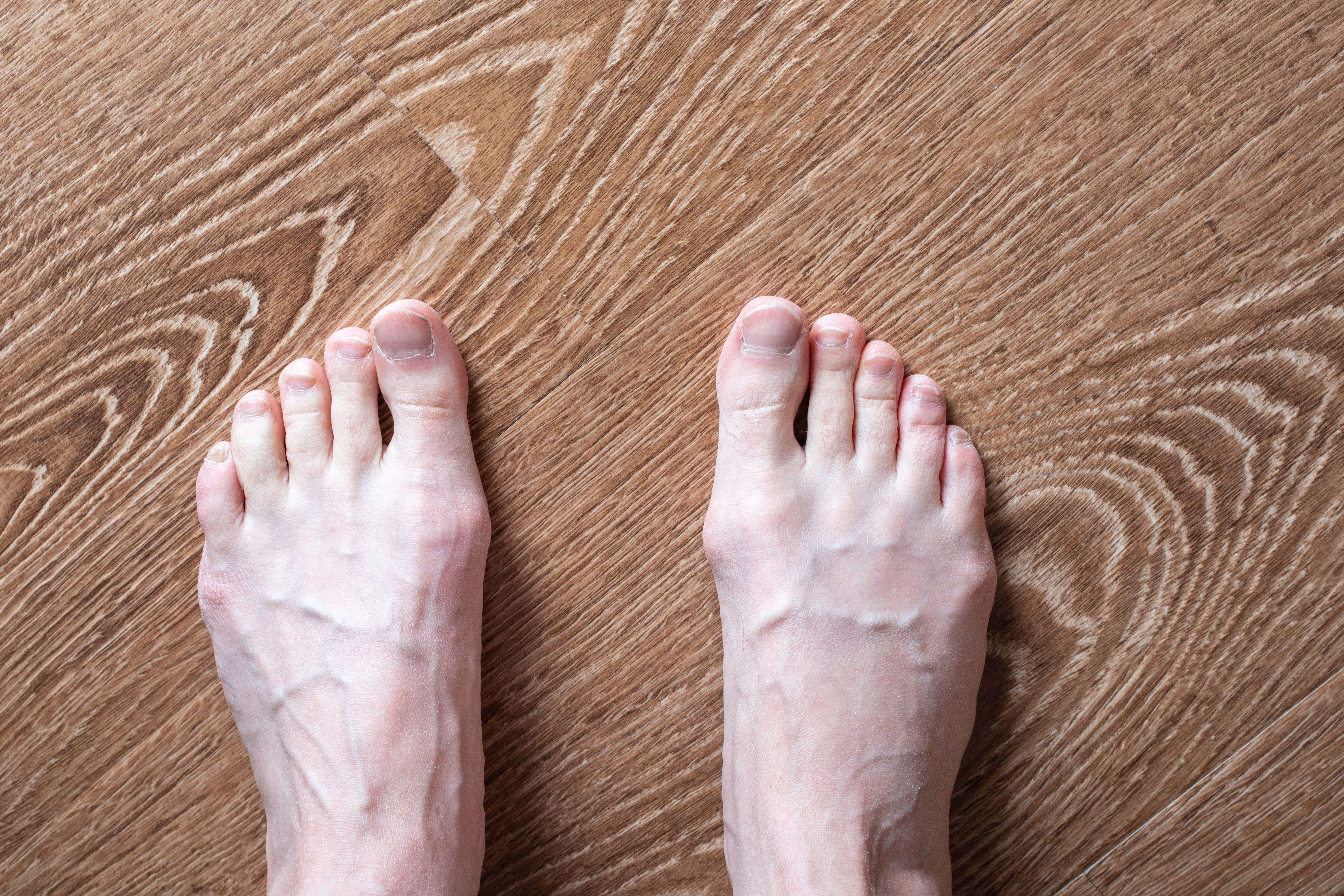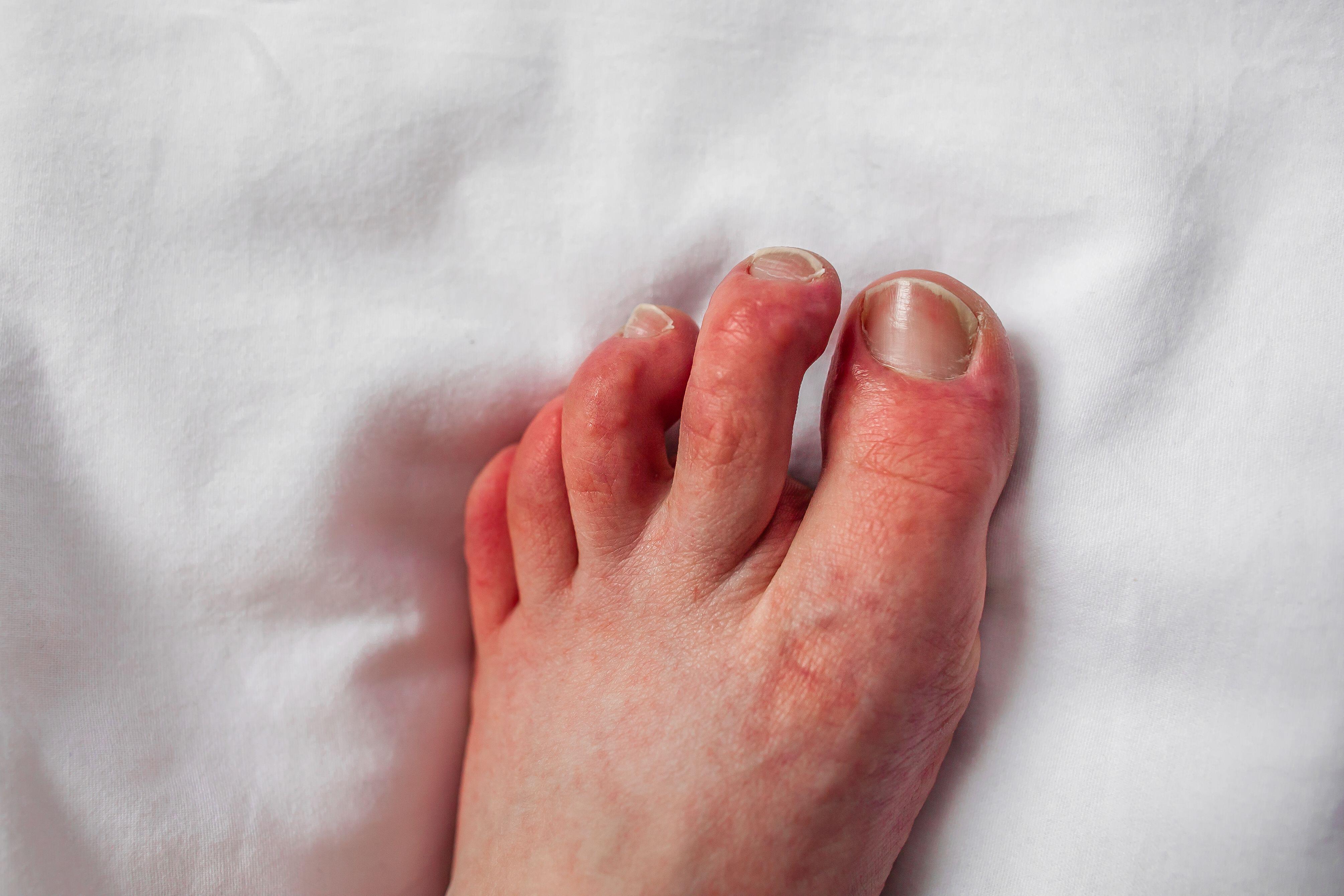
Your feet can be a window into your overall health. And they shouldn’t be ignored.
From heart disease to strokes, your feet can show signs of illness.
Podiatrists can spot a wide variety of often-serious health problems just from looking at your feet.
Emma McConnachie, a spokesperson for the Royal College of Podiatry, stresses: “Podiatrists go much further than dealing with ingrown toenails, corns and verrucae.
“As well as carrying out minor surgery, working to prevent amputations and issuing medication such as antibiotics, they can detect a wide range of health problems via signs in your feet. We delve into some of the things your feet might be trying to tell you.”
Here, McConnachie outlines a few of the health problems that can show up in your feet…
1. Circulation problems
If you’ve noticed a recent change in your feet and ankles such as pronounced swelling or a mottled colouring, this could be a sign of circulatory issues, explains McConnachie. “Changes may occur in only one limb or in both. If you notice any changes in the size or colour of your feet and ankles, then contact your GP or podiatrist.”
She says feet will often be cooler over the winter months as the temperature drops, so making sure your feet and legs are insulated with warm clothing will help minimise this. “There are many circulatory conditions which can also cause a change to the temperature of your lower limbs, so if you notice a sudden and prolonged change in the temperature of one or both of your feet and legs, speak to your podiatrist or GP to get the issue checked out,” she advises.
2. Heart disease, diabetes or neurological conditions
Changes in the sensation in your feet, such as tingling or numbness, can be a sign of many different health issues. McConnachie says circulation problems caused by conditions such as heart disease or diabetes, or through heavy smoking or alcohol consumption can cause nerve endings to stop working properly.

“This leaves you unable to tell if you’re injured or have a wound, greatly increasing your risk of infection and amputation,” says McConnachie, who explains that neurological conditions and trauma can also affect the way nerves work.“Try to note where in your feet you’re getting the changes, and if anything makes it worse or better,” she suggests. “How would you describe the feeling and how often is it happening? This can help your podiatrist assess your issues and work towards a diagnosis.”
3. Kidney or liver problems, hormonal changes or skin issues
Itchy feet can be a sign you have a fungal infection or that you haven’t been moisturising your feet enough, but it can also indicate wider health problems such as kidney or liver issues, or hormonal changes, says McConnachie.
“Certain prescription medications have also been reported to cause itching in the feet and legs as a side-effect, and small fluid-filled lesions associated with dermatological conditions may also be the cause.”

4. Melanoma
Many discoloured nails are caused by trauma releasing a small amount of blood under the nail, or a fungal infection which can cause a brownish-orange discolouration and often thickening and crumbling. However, McConnachie says melanoma under the nail accounts for up to 3.5% of all melanomas worldwide, with up to 90% of these seen in the thumb or big toe.
“Melanomas can affect any skin tone and will often appear as a darker discolouration under the nail which doesn’t grow out with the nail,” she explains. “With the average toenail taking at least six months to grow out, this can make it harder to know if it’s moving, as the mark may appear on your nail for some time.”
Anyone concerned about a discoloured nail should speak to a podiatrist, and McConnachie says taking a close-up photo of the toenail for reference is also a good idea to help you tell if it’s growing out.
5. Dehydration, blood pressure, cardiovascular or thyroid problems
The skin is the largest organ in the body and McConnachie stresses flaking or cracked skin on the feet may be a sign of various health problems: “Dehydration can cause the skin to become less supple, but underlying medical conditions such as issues with blood pressure, cardiovascular conditions and thyroid problems can all have an effect on your skin in your feet and legs,” she says.
6. Autoimmune conditions
Auto-immune conditions such as psoriasis can impact the feet and nails, which may have a different appearance than you’d expect as a result. Many cases of flaking or cracked skin will be caused by athlete’s foot or a lack of moisturising cream, but McConnachie advises: “If you’ve been using moisturiser daily for a couple of weeks with no improvement, or are experiencing itching or lesions, then speak to your podiatrist to get assessed.”
7. Neurological conditions including strokes
Sudden changes in foot shape can also indicate a wider health problem, and McConnachie says: “These would typically be where the foot becomes more ‘clawed’ after a traumatic or neurological issue, for example a stroke, which can cause the foot to change shape suddenly.”
Conditions which have caused a loss of sensation in the feet, such as diabetes, can lead to sudden changes in foot shape which may be a condition called Charcot foot. “If you have any sudden changes in the shape of your foot, especially where you have underlying health conditions or problems with sensation or circulation, speak to your podiatrist promptly for assessment,” advises McConnachie.
8. Pernicious anaemia or type 2 diabetes
Recurring fungal infections of the skin on the foot despite treatment, recurring bacterial infections and sometimes even ingrowing toenail problems which haven’t resolved with treatment may be a sign of something more widespread, warns McConnachie.
“All of these may be a sign there’s an underlying issue in the body,” she says. “Your podiatrist may discuss further testing with your GP where they have a concern about your general health. Conditions such as type 2 diabetes and pernicious anaemia where there may not be other obvious symptoms can sometime present this way.”







